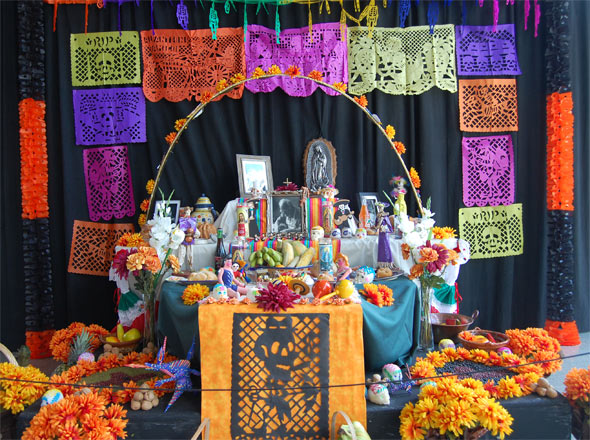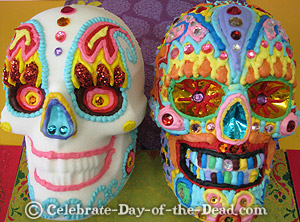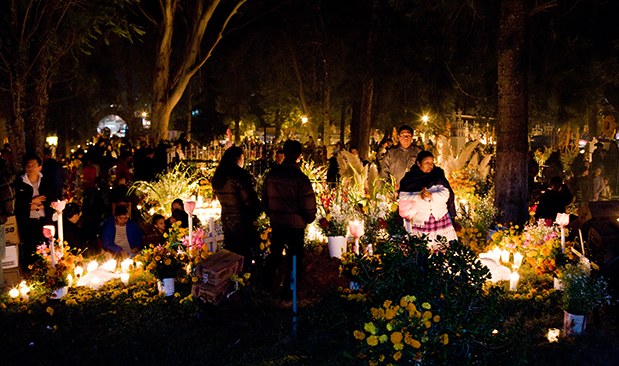Today is the last day of the traditional Mexican holiday, Day of the Dead, or Dia de los Meurtos. If you are not familiar with the traditions of this holiday here is a summary: Day of the Dead celebrations coincide with the Catholic holiday of All Saints Day (and also Halloween) and therefore indigenous people have combined this with their own ancient beliefs to honor their loved ones during the celebration. Those who celebrate Day of the Dead believe that the gates of heaven are opened at midnight on October 31st and the spirits of all diseased children, or angelitos, are allowed to reunite with their families for 24 hours. On the holiday’s final day (November 2nd) the spirits of the adults come down to join the family.

Many indigenous families spend over two month’s income on building beautiful ofrendas for the spirits. These altars are decorated with candles, buckets of flowers, mounds of fruits, plates of turkey, tortillas, and pan demuerto (special day of the dead bread). The altars must have a lot of food, bottles of soda, hot cocoa and water to replenish the spirits. Toys and candies are left for the young angels and on the 2nd, when the adult spirits arrive, shots of mezcal and cigarettes are offered along with tiny folk art skeletons and sugar skulls to add a finishing touch. In return for their offerings, people believe that satisfied spirits will provide protection, good luck, and wisdom to their families.
On November 2nd, festivities are held at the cemetery. People clean tombs, play cards, listen to music, and reminisce about their loved ones.

Skeletons and sugar skulls are important aspects of the Day of the Dead tradition. You may have seen trick – or – treaters dressed up as Day of the Dead skeletons this Halloween (girls with skeleton inspired face paint, flowers in their hair, ect.) The skeletons symbolize life after death (which is pretty much the whole theme of the holiday) During the celebration sugar skulls are given as gifts to both the dead and the living. Sugar skulls became a part of the tradition when sugar art was brought to the New World by Italian missionaries in the 17th century and was used to create lamb sculptures to decorate altars in the Catholic Church. Mexico, an area abundant in sugar production and too poor to buy imported European church decorations, learned from the Catholic friars how to make sugar art for their religious festivals. Sugar skulls represent a departed soul, with the name of the deceased written on the forehead and placed on the ofrenda or gravestone. The art reflects the folk art style of big, happy, smiles, colorful icing and sparkling, glittering adornments. The creations of these skulls is very labor intensive and made in small batches in the homes of sugar skull makers. However, this art form is sadly disappearing as fabricated and imported candy skulls replace them.

